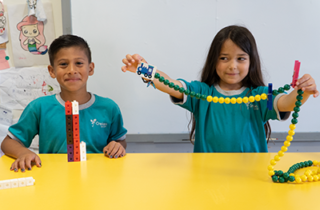Presented by Cynthia Goodman, Manager, Content and Curriculum, Houghton Mifflin Harcourt
Moderated by Denise Singleton, Product Marketing Director, Core Mathematics Marketing, Houghton Mifflin Harcourt
Presented by Dr. Steve Ritter, Founder and Chief Scientist, Carnegie Learning; and Kyla Gibbons, Manager of Professional Learning, Carnegie Learning
Presented by Albert Vilalta Riera, Math Learning Expert, Innovamat; Dr. Hollyce Schoepp, K-12 Supervisor of STEM, Vernon Township School District (NJ); and Bernat Portell, Head of Expansion, Innovamat
Presented by Kristin Gray, Executive Director, Math Suite, Amplify
Presented by Dr. Nicola Hodkowski, Senior Researcher, Mathematics Education, Digital Promise; Dr. Jeremy Roschelle, Executive Director, Learning Sciences Research, Digital Promise; and Carolyn Carhart-Quezada, Head of Teacher Relations, Cignition
Moderated by Dr. Mike Cohen, CEO and Founder, Cignition
Using student data to guide instruction is not only an effective way to increase student achievement, but it can also help educators grow professionally as they continue to analyze new data, discuss its implications, and explore solutions.
Presented by Kathy Walker, RSSP Lead and Data Fellow for School Improvement, Abilene ISD (TX); Raquel Perez, Executive Director of Partner Success, engage2learn; and Kammi Green, Chief of Partner Success, engage2learn
Presented by Cynthia Goodman, Manager, Content and Curriculum, Houghton Mifflin Harcourt
Moderated by Denise Singleton, Product Marketing Director, Core Mathematics Marketing, Houghton Mifflin Harcourt
Presented by Jay Meadows, CEO, Exemplars; and Glen Warren, Director of Literacies, Outreach, and Libraries, Encinitas Union School District (CA)
Moderated by Alaina Cioffi, Director of Sales, Exemplars
Presented by Rachael Labrecque, Ph.D., Co-Founder, Teachley; and Kara Carpenter, Ph.D., Co-Founder, Teachley











